Preparing for Spring Spearfishing – Some questions to ask from a fish nerd.
As this spring’s warmer temperatures make underwater explorations more friendly, more of us than ever before will be venturing into BC’s coastal seas. Advances in wetsuit technology and photography have brought the underwater world ever more accessible to us – and it’s a beautiful world to explore. Rumour has it that even Jacques Cousteau listed the BC coast in his top 10 favourite underwater dives. For many individuals, these underwater explorations will be primarily focused on bringing home dinner; spearfishing has been increasing in popularity in British Columbia.
The popularity of this style of harvesting is often rooted in its more sustainable aspects. An Australian study supported many of these beliefs, finding that globally spearfishing accounted for less than 1% of total catch. Additionally, the ability to be more selective in terms of prey choice and specimen size allowed for the harvester to even further reduce their harvesting pressure on fish populations and habitat ecosystems. The ability for spearfishing to have unsustainable impacts still exists however, and with interest in spearfishing growing locally, it is important for those of us who dive for our dinner to be aware of the impacts we have and support our local ecosystems, so that they in turn may continue to support us.
Humans in the water are a fearsome force to be reckoned with. In his 2015 study on the unique ecology of human predators, Dr. Chris Dairmont and his team found that humans exploit adult fish populations at 14 times the rate of other marine predators. While industrial fishing accounts for much of this, we are still super predators when fishing on our own. Predators must make many decisions when choosing individual prey. They must account for the risk of their prey species harming them and the energy loss of repeated prey escapement. We humans have advances in technology that allow us to avoid all these. Spear guns provide us with safer distances from our prey species and simultaneously allow us to approach specimens well before they may recognize us as predators. Our invented weaponry reduces or completely eliminates escapement; we rarely have to expend energy chasing down an injured fish. Many fish and invertebrate species have incredibly specific cues to alert them of the presence of predators. Humans are so recently aquatic, that we may not even be recognizable as dangerous. When European green crabs began expanding into north Pacific waters, (a sad cautionary tale about frozen bait being unwisely transported from one body of water to another!), it was found that some snails, which thicken their shells in the presence of local red rock crabs to prevent from being crushed by their strong claws, didn’t recognize the smell of the new green crabs as a threat, and failed to protect their soft bodies. Imagine what a predatory threat looks like to you. Is it large? Toothy? Lions, Tigers, and Bears? Imagine if invading aliens arrived that looked and smelled like fresh baked bread. How would we recognize them as dangerous until it was too late for us to do so? Such are we in the sea – new, and for some, unthreatening. It gives us either a wonderful assist or an unfair advantage, depending on your perspective.
One of the biggest issues that occurs sadly far too often is that people jump in the water (or head out on a boat!) without ID knowledge or a plan for what they’re hunting for. Basically, what’re you going for, and what’ll you do when you catch it? Perhaps the best way to discuss this, is to make a comparison between hunting and fishing. To be able to hunt in BC requires passing the CORE (this is British Columbia’s hunting course, called the Conservation and Outdoor Recreation Education Program). On the BC Wildlife Federation website it states, “The program ensures you have the basic knowledge and skill requirements for safe and ethical participation in hunting”. To pass the course, you must participate in a practical firearms handling test and a written test covering: Conservation, Ethics, Law and Regulations, First Aid and Survival, Firearm Safety, Animal Identification, Bird Identification, Indigenous Peoples and Hunting in BC”. When compared to this, the steps one must go through to be legally ready to fish are meager. Step 1. Pay for license. Step 2. Print off license. Step 3. Head out. Recommended, but in no way enforced – look up information on the DFO website. Our lack of an education program for fishing has large consequences. Ecologically important and even threatened species are often misidentified. An example of this can be found in “Red Snapper” an incorrect term often used for Yelloweye rockfish, which are a threatened species. A further example can be found in our broad use of the term “Cod” for many species of fish. A lack of education about handling practices also results in increased bycatch mortality, as people keep fish out of water for too long or overstress fish with poor handling techniques. How can we avoid this? Until there is an aquatic version of the CORE, there are some marine harvesting courses out there and some excellent guides and resources that can help us to harvest more sustainably and ethically. If you’re starting out – here are some questions to ask yourself which can help guide your quest for knowledge.
1. What am I hunting for? This may seem like an odd question, but it’s not unheard of for people to get excited, jump in the water, and shoot the first thing that moves. Even if you know the specific species you’re hunting for, size and age selection can help to reduce your impact on the ecosystem. Rockfish, which are super producers due to their exponential increase in reproductive success in their later years, are an important example of this. Studies on the Vermillion rockfish (sometimes called red snapper along with Yelloweye rockfish, Canary rockfish, and other reddish hued rockfish species) show that a 20 year old female will release around 18,000 larvae, yet an 80 year old will release well over a million. Selecting for smaller, younger individuals rather than going for the biggest ones can therefore be a more sustainable choice for future fish populations.
2. How am I going to handle, and euthanize my prey? Depending on the tools you use, your prey species may be immediately killed, or may require you to euthanize them post catch. Knowing how to quickly handle them (and safely! Rockfish spines are poisonous!) will reduce stress and suffering. Good handling techniques can also increase the likelihood of survival if you catch something you’re intending to release (obviously not the case in spearfishing…).
Once you’ve run through these questions, ask yourself: How often do you visit this habitat? Do others frequent it often as well? These questions are important when considering one of my personal favourite species to harvest: Rock scallops. Rock scallops are far more long lived than many expect. They can live decades, over 50 years. Like oysters, juvenile planktonic scallops settle close to adults. This means that we need healthy adults present to encourage settlement and ensure that scallop harvesting locations thrive. Scallops are also broadcast spawners. Adults release sperm into the sea water to be collected by their neighbours as water flows through their bodies. As scallop beds are stretched further and further apart from overharvesting, it can make it more difficult for adults to successfully reproduce.
There are some excellent resources online to test your ID knowledge. The Oregon Department of Fish and Game has an online quiz called “Yelloweye or Not”, as well as a “Oregon Recreational Bottomfish ID Quiz”. Dr. Greg Jensen’s lab’s website, molamarine.com has a downloadable free flatfish ID guide, and links to his crab and shrimp ID book. Coastal Fishes – by Andy Lamb is a great resource and can be purchased at a number of local bookstores. I’d also recommend 2 of my favourite books, “Certainly More Than You Want To Know About The Fishes of the Pacific Coast” and, if you’re really into rockfish, “Rockfishes of the Northeast Pacific”. Both are by the incredible Dr. Milton Love.
Lastly, a great way to keep on the sustainability train is to connect with others and continue the quest for knowledge. We’re constantly learning more about the complexity of our local ecosystems and the life cycles of the species within them. To ensure a future in marine harvesting, we must make sure we are protecting these aquatic spaces where we as a community relax, gather our meals, and play. We can also be proactive by studying our collecting efforts and behaviors. Studies on spearfishing and freedive harvesting are few and far between. The same Australian study mentioned above found 84,200 articles internationally on fishing, and only 145 had reference to spearfishing. Locally, one of the best ways to start practicing your ID skills, and having conversations with people that love fish, is to get a season’s pass to the Ucluelet Aquarium and start going in regularly to familiarize yourself with local species and their seasonal changes. This is of course a plug for my favourite organization out there, but come in, challenge us nerds with some ID questions and see how great it is for yourself.
By: Laura Griffith-Cochrane



